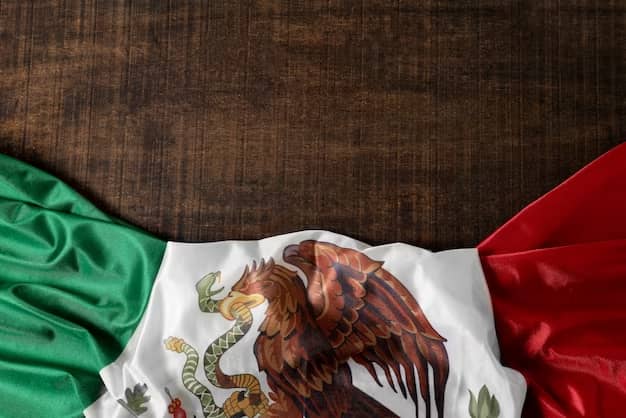
Mexico, ranked as the world’s 14th largest country and third in Latin America, boasts a population of 130 million. Its economy, with a nominal GDP of $1.1 trillion as of 2016, is the 15th largest globally and second in Latin America. Mexico’s per capita income is approximately a third of that of the United States, positioning it as an upper-middle-income nation as classified by the World Bank.
Economic Freedom and Human Development in Mexico
Mexico is categorized as a moderately free country, ranking 59th on the Index of Economic Freedom and 77th on the Human Development Index. These indices reflect a balance between market-oriented policies and government regulation.
Sectoral Composition of Mexico’s Economy
The Mexican economy is multifaceted, with contributions from various sectors:
- Primary sector: 3.7%;
- Secondary sector: 33.1%;
- Tertiary sector: 63.2%.
In-Depth Analysis of Economic Sectors in Mexico
Primary Sector of Mexico
Mexico’s primary sector, diverse due to the country’s varied climates and natural resources, includes agriculture, mineral extraction, forestry, and fishing. Notable agricultural products are sugar cane, corn, wheat, and citrus fruits, while key non-renewable resources include oil, gold, and silver. State-managed, the energy sector, particularly oil production, plays a significant role, with Pemex being the largest company.
Secondary Sector of Mexico
The secondary sector, particularly manufacturing, has been integral to Mexico’s economic performance. Major industries include automotive, petrochemicals, and food and beverages, with automotive being a standout sector due to its high-quality standards and export growth. Cities like Monterrey and Tijuana are industrial hubs, contributing significantly to this sector.
Tertiary Sector of Mexico
Mexico’s service sector includes commerce, tourism, real estate, and financial services. Tourism is a major income source, making Mexico a top destination in Latin America. Though dominated by foreign firms, the financial sector includes significant local players like Banorte.
Mexico in International Trade
As the world’s 10th largest exporter, Mexico’s trade activities are extensive, supported by free trade agreements with 46 countries. Its main exports include automobiles and computers, while imports largely comprise vehicle parts and refined petroleum.
Leading Export and Import Commodities of Mexico
- Top Exports: Automobiles, vehicle parts, delivery trucks, computers, and crude petroleum;
- Top Imports: Vehicle parts, refined petroleum, integrated circuits, computers, and cars.
Comparative Table: Sectoral Breakdown of Mexico’s Economy
To provide a clearer perspective on the diverse economic activities of Mexico, below is a unique comparative table illustrating the key characteristics and contributions of each economic sector:
| Economic Sector | Characteristics | Contribution to Economy | Notable Aspects |
|---|---|---|---|
| Primary Sector | Agriculture, mining, forestry, fishing | 3.7% of GDP | Rich in natural resources, diverse agricultural products |
| Secondary Sector | Manufacturing, construction, utilities | 33.1% of GDP | Strong in automotive, petrochemicals, and high-end manufacturing |
| Tertiary Sector | Services like tourism, finance, telecommunications | 63.2% of GDP | Tourism as a major income source, advanced financial services sector |
Impact of Globalization on Mexico’s Economic Sectors
In this additional section, we delve into the effects of globalization on the diverse economic sectors of Mexico. Globalization has played a pivotal role in shaping the country’s economic activities, influencing trade policies, sectoral growth, and international competitiveness.
Globalization’s Influence on Mexico’s Economy
- Enhanced International Trade: Globalization has significantly expanded Mexico’s trading activities. The country’s free trade agreements, most notably NAFTA (now USMCA), have opened up vast markets, particularly benefiting the manufacturing and export sectors;
- Foreign Direct Investment (FDI): Mexico has attracted considerable FDI, especially in the secondary sector. This influx of capital has led to technological advancements, particularly in the automotive and aerospace industries;
- Agricultural Sector Transformation: The primary sector, while a smaller portion of the GDP, has seen a shift towards export-oriented agriculture, driven by global demand for certain crops and products;
- Service Sector Expansion: The tertiary sector, especially tourism, financial services, and telecommunications, has grown due to increased global connectivity and foreign interest in Mexico’s service offerings;
- Labor Market Dynamics: Globalization has also influenced labor market trends in Mexico, with an increased demand for skilled labor in the manufacturing and services sectors, and a notable shift in the workforce from traditional agriculture to more industrial and service-oriented roles.
Challenges and Opportunities
While globalization has brought numerous opportunities to Mexico, it has also presented challenges:
- Economic Dependence: Heavy reliance on global markets, especially the U.S., makes Mexico vulnerable to external economic fluctuations;
- Income Inequality: Despite economic growth, income disparity remains a significant issue, with globalization often benefiting certain sectors and regions more than others.
Conclusion
Mexico’s economy, a blend of various sectors, demonstrates its capacity as an increasingly industrialized country. With significant contributions from manufacturing and service industries, coupled with its strategic role in international trade, Mexico continues to strengthen its position as a key player in the global economy. The country’s economic activities reflect a dynamic market that balances traditional sectors with modern industrial and service-oriented enterprises.